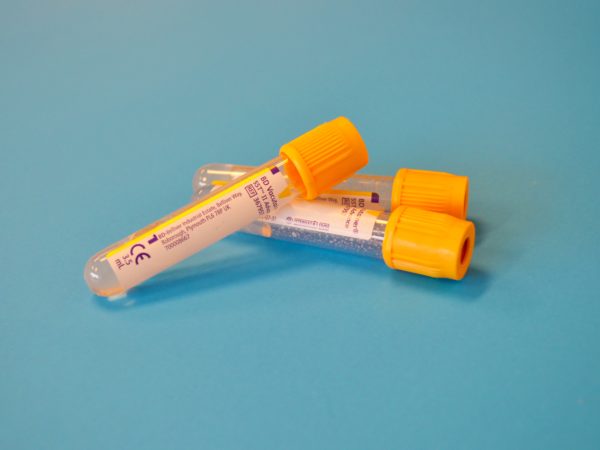Our brains have a hardwired salt craving.
Throughout our evolutionary history, salt has been vital for human survival, and an incredibly rare resource. Consequently, we’ve evolved neuronal pathways for a salt craving that we can’t control. But what exactly are the neurotransmitters and signalling pathways that drive our desire for salt?
Dr Craig Smith of Deakin University has been spearheading experiments to answer this question, as well as finding an important link with opioids and the opioid epidemic.
Why salt?
Is there a more innocuous seasoning in your kitchen than salt? As the most common condiment in cooking, it’s easy to sprinkle into your dinner without thought. From our modern perspective, it’s hard to imagine how important salt has been throughout human history. Empires have risen and fallen from its trade.
Gandhi’s civil resistance for Indian independence centred around the Salt March, a protest on a salt tax imposed by the British Empire. And that’s because salt isn’t just mild seasoning, it’s one of our five basics tastes and an essential mineral for life.
And the high value of salt isn’t just a phenomenon of human society, it’s conserved in the selection pressures of evolution. Animals are driven to take high risk and energy intensive hunting for salty meat, as the opportunity for salty foods is irresistible to predators. But why do humans and animals have such a drive to find salty food?
There are many physiological and cellular functions that depend on salt. It’s vital for homeostasis, which is the regulation of physical and chemical conditions in the body, constantly being rebalanced by feedback loops. Specifically, salt is vital for regulating water.
Salt is also required for specialised functions in regulating blood volume and pressure, as well as enabling the conduction of nerve signals.
Unfortunately, though, sources of salt are hard to find in nature. The oceans that provide rain through water vapour leave the salt behind during evaporation. Geological sources are incredibly rare and become harder to find the further you venture inland. Consequently, this lack of seasoning permeates throughout the food web.
Plants have very little salt to extract and can’t serve salt to the herbivores that lie above them in the food chain.
Opioids and ‘MOR’ signalling in salt consumption
This was the first study directly proving the powerful role of naturally released opioid neurotransmitters within the CeA in driving mammalian salt consumption.
It’s a neuronal mechanism which has developed due to an intense evolutionary pressure for animals to crave and find salt.
It’s well known that opioids drive this craving. Opioids are neurotransmitters synthesised by the body which induce our appetite for, and encourage motivation to acquire, food.
However, many of the finer details have long eluded scientists. With help from collaborators, Dr Craig Smith at Deakin University has conducted research elucidating the neuronal mechanisms that help to drive our salt lust.
Their experiments required them to feed mice low salt diets to control their salt intake with a single source of salt: a salty water solution. Mice are the ideal model organism for these experiments, as they have a similar brain structure to humans, including the same pathway for salt appetite.
Their first experiment used drugs to block subtypes of receptors for opioid neurotransmitters. Results identified the ‘mu opioid receptor (MOR)’ – a receptor which sends a signal when it binds with an opioid neurotransmitter – reduced the volume of salt consumed by more than half when it was blocked.
Using immunohistochemistry, Dr Craig Smith also identified the location of these neurotransmitters. He found that neurons in the central amygdala became highly active while salt was being consumed. This section of the amygdala controls many innate and conditioned behaviours, including appetite-related and feeding behaviour.
More importantly, this activity was curtailed by the MOR-blocking drugs, showing that the MOR receptors and their opioids are essential to the salt appetite for mice.
These results are significant in a modern society which has allowed humans to indulge, and overindulge, on salt for the first time in its evolutionary history.
An opioid-salt addiction?
Attentive readers may recognise the word ‘opioid’ from a completely different context. As it turns out, the opioid pathways in our brain are connected to the opioid drugs that are the centre of the opioid epidemic in the United States of America.
Opioid drugs work by hijacking our body’s many naturally occurring opioid receptor pathways, causing pain relief as well as addiction. As these pathways also control our response to salt, Dr Smith began to wonder if opioid drug use also affected the users’ response to salt.
This follow on experiment compared a non-opioid control with two other groups: people currently taking opioids and people who had been ‘abstinent’ (sober), for about one year.
Results showed that the abstinent group had a greater palatability and craving for highly salted drinks than the other two groups. They were also the only group to continuously increase their desire for salted drinks as the salt concentration increased.
This shows that the sensitivity that abstinent people continue to have towards opioids even after quitting develops a ‘cross-sensitivity’ with salt. This may be due to high concentrations of salt triggering the release of opioids, mimicking the impact of opioid drugs in the central amygdala.
Our salt cravings are leading to hypertension, which increases the risk of suffering strokes, and kidney and heart diseases. According to the WHO, 1.13 billion adults worldwide had hypertension in 2015. The salt induced health crisis has never been worse for humanity.
Dr Craig Smith hopes that now their research has helped identify the neuronal pathways that underpin our drive for salt, it could be used to design drugs that block opioid receptors that are specific to these signalling pathways, thus targeting our neurons at the heart of our vice.
This will undoubtedly be a valuable tool in a new fight, as societies are no longer fighting for more salt. For the first time in our history, we are instead battling our own inner desires to overconsume this once precious commodity.
Dr Craig Smith is a Senior Lecturer and Laboratory Head at Deakin University, within the School of Medicine and the Institute for Mental and Physical Health and Clinical Translation (IMPACT).
Professor Andrew J. Lawrence is an NHMRC Principal Research Fellow & Division Head at the Florey Institute of Neuroscience & Mental Health, where he is leader of the Mental Health Research Theme and runs the Addiction Neuroscience laboratory.
This article was originally published on Research Features.



